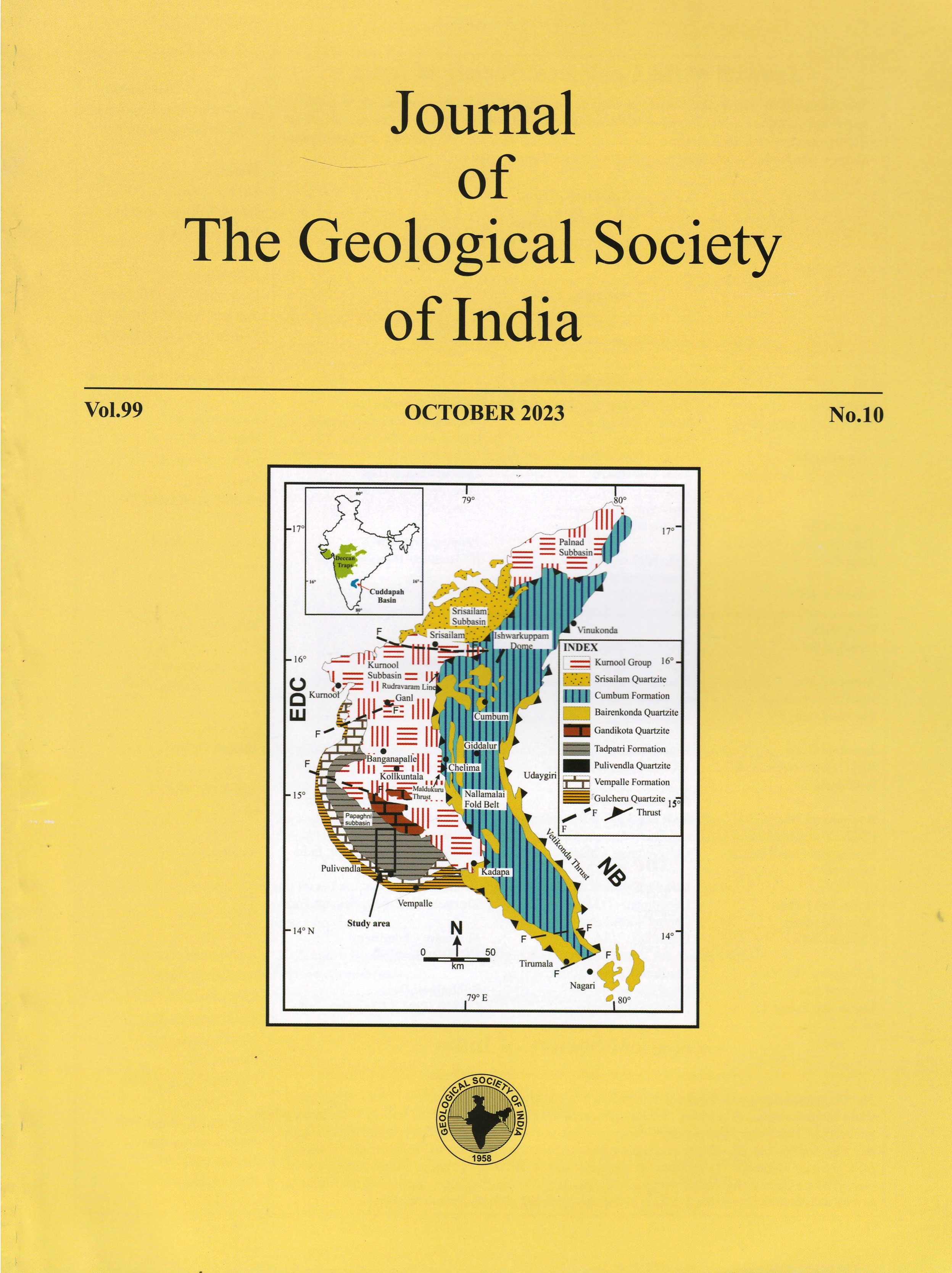Paleoclimatic Influence on the Evolution of the Late Quaternary Clastic Sediments, Northwestern Arabian Sea
DOI:
https://doi.org/10.1007/s12594-023-2482-yKeywords:
No KeywordsAbstract
Sedimentological characteristics of the clastic sediments deposited in the Northwestern Arabian Sea at the ODP core sites 723A and 722B are used to reconstruct the paleoclimatic changes recorded during the last 150 kyrs. ODP site 723A is situated at 808 m water depth on the continental margin of Oman, whereas ODP site 722B is located at 2028 m water depth on the Owen Ridge. Clay minerals such as palygorskite, illite, chlorite, smectite, kaolinite, and non-clay minerals, quartz and feldspar, are present in both cores. However, palygorskite and illite dominated the clay mineral assemblage at core 723A, and illite dominated over palygorskite in the clay mineral assemblage at core 722B. Illites are dominantly well crystalline, with slightly poorer crystallinity occurring during Holocene and interglacial stages. Chemically illites are Mg-rich with slightly Al-rich illites associated with aforesaid stages. The higher values of all moisture-clay based humidity tools (ratios of kaolinite/illite, kaolinite/chlorite, smectite /(illite+chlorite), kaolinite/palygorskite) are dominantly associated with stronger monsoon based weathering during the interglacial stages, Holocene and interstadial events. The increased total carbonate, elemental concentrations (calcium, barium and phosphorous) and decreased magnetic susceptibility values correlate with the enhanced monsoon intensities during the above events. Glacial stages and millennial-scale drier events (Heinrich, Younger Dryas and stadial events) are marked by the massive influx of wind borne terrigenous material, dominated by clay minerals with higher silicon and aluminium contents; they have increased sediment accumulation rates at both sites. The clay proxies and other sedimentological data demonstrate monsoonal oscillations at 40, 23, 6.3, 4.4 and 3.5kyr cycles in Milankovitch and sub-Milankovitch time scales. The present study suggests that the detritus are mainly eolian and primarily originated from the nearby continental areas of Oman, the Arabian Peninsula, Persian Gulf and Iran-Makran regions. The northwesterly wind played a significant role in sediment transportation into the present sites throughout the studied period. The southwest summer and northeast winter monsoon winds played minor roles in the above activity during the interglacial and glacial stages, respectively. The Indus River discharges (predominantly of glacial origin), although low, have contributed some clay minerals in the deeper water core site.

 Vikas Dev
Vikas Dev






